As technology continues to advance, so do the dangers associated with it. Weapons-grade lasers, once only depicted in science fiction movies, are now a growing concern in real life. These powerful lasers have the potential to cause significant harm, especially when pointed at aircraft in the sky.
Australian Defense Department Alleges Chinese Laser Attack on Surveillance Aircraft
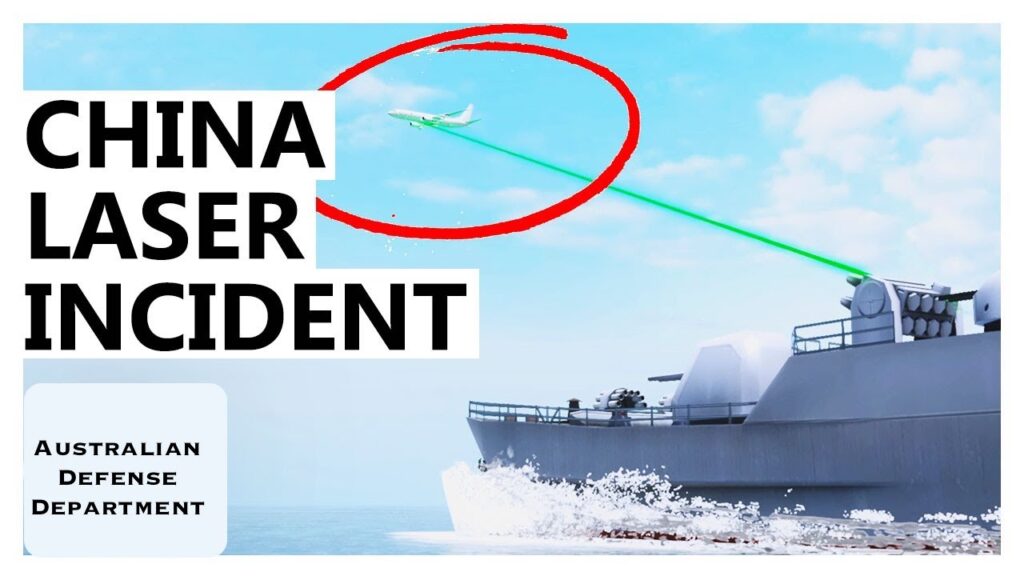
• The Australian Defense Department reported a laser incident on a P-8A Poseidon plane by a Chinese navy ship.
• The incident occurred while the aircraft was in flight over Australia’s northern approaches.
• The incident is part of a growing US and allies’ accusations of China’s military might and challenge of Beijing’s influence in the western Pacific.
• The laser came from a People’s Liberation Army Navy vessel, accompanying another Chinese ship in the Coral Sea.
• The Department condemned the incident as a serious safety incident, stating that lasers can injure pilots or temporarily blind them.
• Similar incidents have occurred in the South China Sea in 2019, and in 2018, with the US expressing concerns over the use of high-grade lasers near a military base in Djibouti.
Ref: https://www.theguardian.com/australia-news/2022/feb/21/what-happened-when-a-chinese-ship-shone-a-laser-at-an-australian-plane-and-why-does-it-matter
“WEAPONS-GRADE LASERS COULD POTENTIALLY CAUSE SERIOUS HARM TO AIRCREW AND MARINERS, AS WELL AS SHIP AND AIRCRAFT SYSTEMS.”
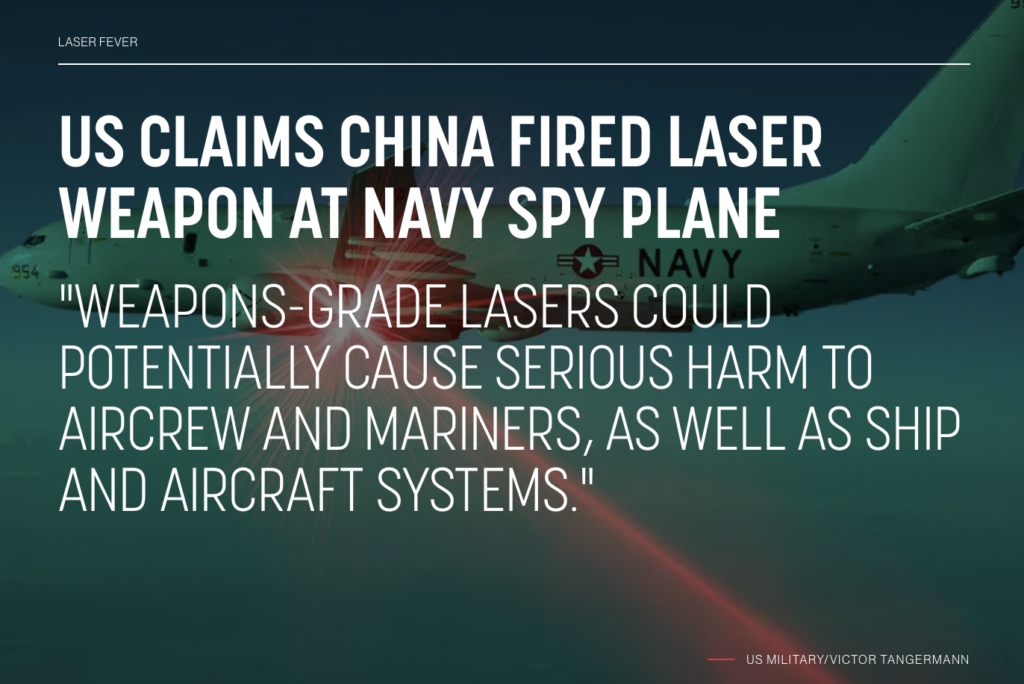
Energy Warfare
The U.S. Navy claims that a Chinese warship fired a laser weapon at one of its surveillance aircraft last week.
“Weapons-grade lasers could potentially cause serious harm to aircrew and mariners, as well as ship and aircraft systems,” read the Navy’s statement, according to CNN.
Razzle Dazzle
According to the Navy, the Chinese weapon was a “dazzler” laser, intended to blind sensors or human pilots — a high-powered version, effectively, of the dangerous practice of shining a laser pointer at a commercial aircraft.
The move was aggressive enough, military officials told CNN, that it’s likely to spur a formal diplomatic protest by the U.S.
Laser Focus
This isn’t the first time the U.S. has accused China of targeting its forces with laser weapons.
In 2018, military officials warned pilots that a Chinese airbase in Djibouti may have targeted its planes with “military-grade laser beams” — a flap that also spurred a previous diplomatic protest.
SECRET INDIAN The KALI Kilo Ampere Linear Injector

The KALI (Kilo Ampere Linear Injector) is a linear electron accelerator being developed in India by Defence Research and Development Organisation (DRDO) and Bhabha Atomic Research Centre (BARC). It is said by many organisations and institutes to have directed-energy weapon capabilities. This KALI weapon is said to be India’s top-secret weapon.
The KALI has been put to various uses by the DRDO.
The X-rays emitted are being used in Ballistics research as an illuminator for ultrahigh speed photography by the Terminal Ballistics Research Institute (TBRL) in Chandigarh. The Microwave emissions are used for EM Research.
The microwave-producing version of KALI has also been used by the DRDO scientists for testing the vulnerability of the electronic systems of the Light Combat Aircraft (LCA), which was then under development.
It has also helped in designing electrostatic shields to “harden” the LCA and missiles from microwave attack by the enemy as well as protecting satellites against deadly Electromagnetic Impulses (EMI) generated by nuclear weapons and other cosmic disturbances, which “fry” and destroy electronic circuits. Electronic components currently used in missiles can withstand fields of approximately 300 V/cm, while the fields in case of an EMI attack can reach thousands of V/cm.
The project was first founded by Dr. P.H. Ron, and mooted in 1985 by the then Director of the BARC, Dr. R. Chidambaram. Work on the project began in 1989, being developed by the Accelerators & Pulse Power Division of the BARC. DRDO is also involved with this project. It was initially developed for industrial applications, although defence applications became clearer later.
The first accelerators had an electron beam power of ~0.4GW, which increased as later versions were developed. These were the KALI 80, KALI 200, KALI 1000, and the KALI 5000.
The KALI-1000 was commissioned for use in late 2004.
Video in Hindi:
Chinese Satellite Beams Green Lasers Over Hawaiian Islands
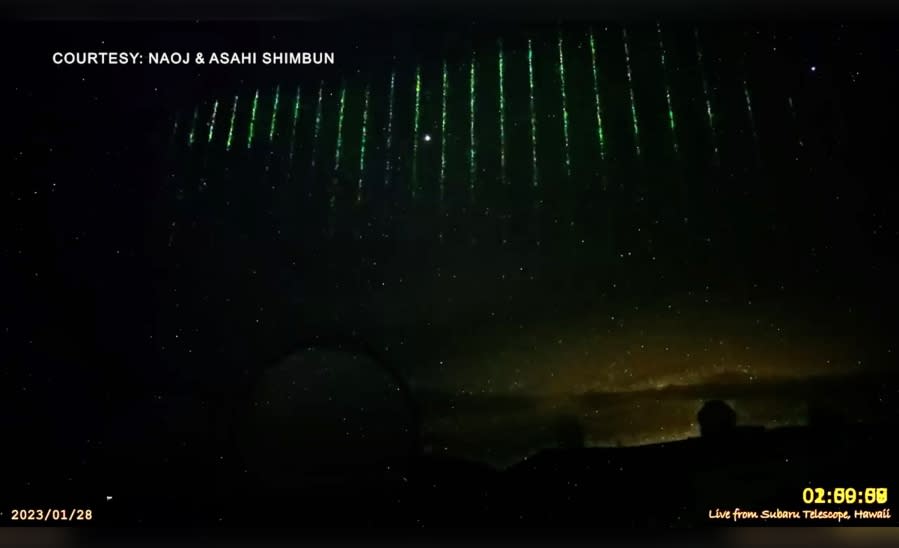
• A National Astronomical Observatory of Japan livestream camera captured footage of a Chinese satellite beaming green lasers over the Hawaiian Islands.
• The lasers, initially thought to be from a NASA altimeter satellite, were later confirmed to be from the Chinese Daqi-1/AEMS satellite.
• The satellite is believed to be measuring pollutants and other environmental measurements, according to Roy Gal from the University of Hawaii Institute of Astronomy.
Ref: https://www.yahoo.com/news/chinese-satellite-beams-green-lasers-114353125.html
DRDO DEVELOPS NEW LASER WEAPONS FOR INDIA
India’s Defence Research and Development Organisation (DRDO) has developed a laser-based weapon that will impair vision temporarily to control unruly crowds such as Kashmir’s stone-throwing mobs. The non-lethal military gadget would be supplied to para-military forces in Jammu and Kashmir within three months, a senior DRDO official said.
When turned on, the gadget, called laser dazzler, sends out radiation to immobilise individuals or crowds. The green rays can throw a wave of agony nearly 250 metres away
AK Maini, who heads the DRDO’s Laser Science and Technology Centre, told HT hand-held laser dazzlers with a range of 50 metres would be supplied to paramilitary forces by October for feedback on performance.
He said a vehicle-mounted weapon system for engaging mobs at nearly 250 metres would be ready by the end of next year. What makes the laser effective is that it doesn’t have to be aimed and shot, it moves like a large circle with a spread of almost 20 metres. It will allow security forces to disperse crowds without inflicting life-threatening injury. Maini said the system was different from Western gadgets that employed millimetre wave technology to repel crowds by targeting different parts of the body.
He explained, “It’s not a stun gun. The laser dazzler targets only the eyes. It could be the perfect solution to de-escalate aggression such as the kind caused by Kashmir’s stone-throwing mobs.”
The DRDO is also working on a laser-based ordnance disposal system to detonate explosives from a safe standoff distance. Also in the pipeline are vehicle and airborne laser systems to engage hostile targets such as aircraft and missiles. These technologies may take up to two years to mature. (From hindustantimes)
Move aside Darth Vader and Luke Skywalker, India’s DRDO is trying to develop its own set of Star Wars-like weapons. From laser dazzlers to control rioting crowds to high-powered lasers to destroy incoming missiles, DRDO is working on a slew of directed energy weapons (DEWs).
“Lasers are weapons of the future. We can, for instance, use laser beams to shoot down an enemy missile in its boost or terminal phase,” said DRDO’s Laser Science & Technology Centre (LASTEC) director Anil Kumar Maini, talking to TOI on Monday.
Incidentally, DRDO chief V K Saraswat himself has identified DEWs, along with space security, cyber-security and hypersonic vehicles, as focus areas in the years ahead. “LASTEC has the mandate to develop DEWs for armed forces,” said DRDO’s chief controller (electronics & computer sciences) R Sreehari Rao.
While conventional weapons use kinetic or chemical energy of missiles or other projectiles to destroy targets, DEWs decimate them by bombarding with subatomic particles or electromagnetic waves at the speed of sound. Apart from the speed-of-light delivery, laser DEWs cause minimal collateral damage.
DRDO, of course, often promises much more than it can deliver. But even the defence ministry’s recent “technology perspective and capability roadmap” identifies DEWs and ASAT (anti-satellite) weapons as thrust areas over the next 15 years, as was first reported by TOI.
The aim is to develop laser-based weapons, deployed on airborne as well as seaborne platforms, which can intercept missiles soon after they are launched towards India in the boost phase itself. These will be part of the fledgling ballistic missile defence system being currently developed by DRDO.
The US, incidentally, is already conducting tests of high-powered laser weapons on a modified 747 jumbo jet, the ALTB (airborne laser testbed), which direct lethal amounts of directed energy to destroy ballistic missiles during their boost phase.
It will, of course, take India several years to even conduct such tests. For now, LASTEC is developing “a 25-kilowatt” laser system to hit a missile during its terminal phase at a distance of 5-7 km. “All you need is to heat the missile skin to 200-300 degree and the warhead inside will detonate,” said Maini.
LASTEC is also working on a vehicle-mounted “gas dynamic laser-based DEW system”, under project Aditya, which should be ready in three years. “But Aditya is just a technology demonstrator to prove beam control technology. Ultimately, we have to develop solid-state lasers,” said Maini. (From Times of India)
According to some military experts, the overall level of India’s laser weapons is still at the early stage. The laser-based weapon “laser dazzler” emerged in the 1980s, which were used to spot snipers and impair their vision. China also displayed its T-99 tanks with a laser-based system in its 50th anniversary military parade in 1999, which is said to be capable of impairing tank aimers’ vision over one thousand meters away and causing possible damage to tanks’ aiming system.
Military experts also point out US and former Soviet Union conducted experiments of the laser anti-ballistic missile technology during the Cold-War era.The current laser anti-ballistic technology of US ranks the leading position in the world. Meanwhile, US and Russia have shifted their focus to solid-state directed energy weapons with higher effectiveness, smaller size and lighter weight.
Mar 12, 2017 : China’s new space lasers to take out satellites leaving west at mercy of Beijing missiles
CHINA is developing an arsenal of first-strike space-lasers that could destroy NATO satellites neutralising the west’s ability to fight back in any conflict.

The lasers will take out US and European satellites from the ground killing off the Washington’s ability to launch intercontinental ballistic missiles in retaliation.
ven basic military communications may become impossible if the super-powered lasers take down key communications network satellites.
Electromagnetic railguns and high-power microwave weapons are also being developed, according to military expert Richard Fisher.
And he claims the push to produce these futuristic weapons is to neutralise US intelligence along with communication and navigation satellites.
Ground-based radars would first be used to identify enemy satellites, with precision targeting ensured by a special camera.
And a deployable membrane telescope would then focus the laser’s beam on the target, before obliterating it.
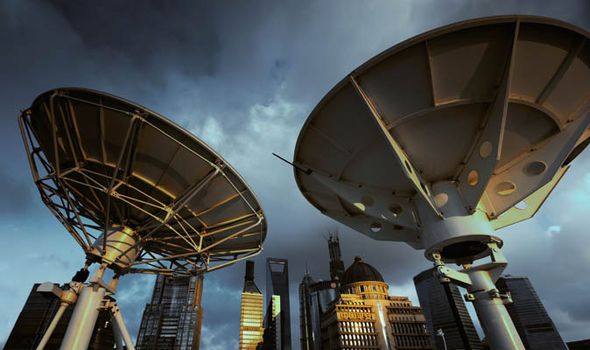
Mr Fisher said: “The Chinese government would not hesitate to use the lives of its astronauts as a shield to deceive the world about the real purpose of its space station.
“Having gained the advantage of surprise, the combat space station could begin attacks against key US satellites, thus blinding the US to the launch of new combat satellites that would attack many more US satellites.”
Military secrecy means it is difficult to know the full extent of the laser weapons programmes, which are believed to be capable of destroying enemy satellites in orbit from its position in low-Earth orbit.

They claimed anti-satellite weapons will be “very important” in future wars, with the space-based laser systems likely to have a substantial part to play.
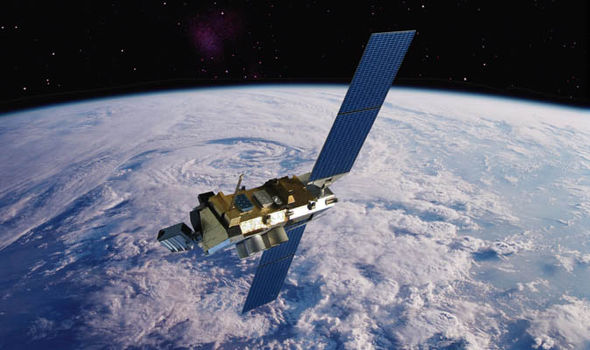
It is thought the five-ton chemical laser could even be operational as soon as 2023, if the Chinese military which oversees the country’s space programme can fund the research.
Mr Fisher added: “As long as China demonstrates its willingness to exploit much of its space program for potential military missions, the US must possess options for at least neutralising potential threats, preferably short of threatening lives.”
The news comes just a day after it was revealed China had unveiled its latest military addition to the People’s Liberation Army’s airforce [a].
[a] https://www.express.co.uk/news/world/777827/China-new-stealth-fighter-J20-war-America-Donald-TrumpThe new J20 stealth fighter jets are so advanced, they make Britain’s new US-built F35s look antique in comparison [b].
[b] https://www.express.co.uk/news/world/777827/China-new-stealth-fighter-J20-war-America-Donald-Trump
The futuristic Chinese aircraft have longer range, more internal fuel capacity and a larger weapons capacity – and equipped with unique WS-15 turbo engines capable of reaching supersonic speeds.
While the F-35’s top speed is 1199mph, the J-20s is a hefty 1,305mph.
However when fully operational the F-35 may offer significant advantage in terms of manoeuvrability as questions hang over the Chinese plane’s air-to-air capability.
The F-35 can also land vertically – meaning it can be used in many more theatres of operations.
Additional Information:
Introduction to Chemical Lasers
Chemical lasers represent a unique class of lasers that generate light through a chemical reaction. This method of light production distinguishes them from other types of lasers, which typically rely on electrical discharges or other forms of energy input. The basic principle of all lasers, including chemical lasers, is that they operate based on the phenomenon of stimulated emission of radiation.
Working Principle of Chemical Lasers
Chemical lasers rely on a chemical reaction to produce a population inversion between energy levels of molecules or atoms, which in turn leads to laser emission. The unique feature of chemical lasers is that the energy needed to achieve this population inversion comes from the exothermic chemical reaction itself. In some chemical lasers, a chemical reaction directly produces excited-state molecules that can emit laser light. In other types, the reaction heats a gas mixture that then produces the laser action.
Types of Chemical Lasers
- Gas Dynamic Lasers (GDL): These lasers operate by the transfer of vibrational energy from a hot gas to a cooler one. The most common example is the CO2-N2 gas dynamic laser, which uses an exothermic chemical reaction to heat a mixture of CO2, N2, and He.
- Chemical Oxygen Iodine Lasers (COIL): These lasers produce laser light through a chemical reaction between chlorine and an iodine molecule. The reaction produces excited iodine atoms that emit light at a specific wavelength.
- Hydrogen Fluoride (HF) and Deuterium Fluoride (DF) Lasers: These types of lasers use a chemical reaction between hydrogen or deuterium and fluorine to create a population inversion and subsequent lasing action.
Applications of Chemical Lasers
Due to their high power output, chemical lasers find use in a variety of areas. They are used in industry for applications such as cutting and welding. The military has also explored the use of chemical lasers for missile defense. Furthermore, they have been used in research and development for studying various aspects of laser-matter interaction.
Advantages and Disadvantages of Chemical Lasers
Chemical lasers offer several advantages over other types of lasers. The primary advantage is their high power output. Due to the energy coming directly from the chemical reaction, they can produce a greater amount of continuous wave (CW) laser power than most other types of lasers. Additionally, some types of chemical lasers, like COIL, can operate at atmospheric pressure, which simplifies their design and operation.
However, chemical lasers also have certain drawbacks. The chemicals used in these lasers are often hazardous and require careful handling and storage. Moreover, the disposal of waste products from these lasers can pose significant environmental challenges. Another disadvantage is the complexity of their operation, which requires precise control over the chemical reaction and laser resonator conditions.
Recent Developments and Future Outlook
Advancements in chemical laser technology have been driven by the demand for high-power lasers in various fields. Significant efforts have been made to increase the efficiency and power output of these lasers, reduce their size and cost, and improve the safety of their operation. For example, researchers are exploring the use of new chemical reactions and lasing mediums to achieve these goals.
Looking ahead, the future of chemical lasers may lie in the development of ‘green’ chemical lasers that use environmentally friendly chemicals and have a minimal impact on the environment. This is an exciting area of research that could revolutionize the field of high-power lasers.
Source: Electricity – Magnetism, Futurism, The Guardian, Caution India, Youtube -Image, Eventsmauritiustravel – Image,
Also Read:
Qvive.in passionate about bringing you the most accurate and reliable information possible. Our dedication to honesty and transparency sets us apart – you can always trust that we’re delivering what is right and true. With a keen focus on social relevance, we aim to provide the most credible information available.
Join us in our mission to prioritize accuracy and reliability. Support Qvive.in by following us and spreading the word! Together, we can make a difference.
Stay informed. Stay empowered. Support Qvive.in.
